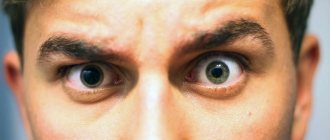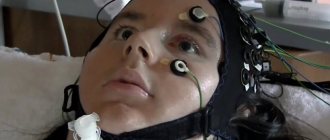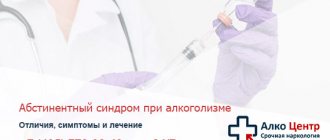Causes and prerequisites of the disease
The main reason is birth trauma or congenital brain injuries. If blood circulation in the brain is disrupted during pregnancy or childbirth, oxygen starvation occurs.
In adults, it is more difficult to determine the cause of the disease. Sometimes muscular dystonia develops while taking various medications, after traumatic brain injury, and dystonia caused by degenerative hereditary diseases may appear late. Very often, adult patients are diagnosed with idiopathic dystonia - that is, of unspecified etiology.
At CELT you can get advice from a neurologist.
- Initial consultation – 4,000
- Repeated consultation – 2,500
Make an appointment
Diagnosis and treatment
Movement disorder syndrome is one of the most common diagnoses in children of the first year of life. Sometimes it can be associated with the child’s functional excitability and be a feature of temperament and character. However, in many cases, increased vigilance can save you from serious problems.
Movement disorder syndrome is a complex pathology of child development. It usually occurs in the prenatal period or during childbirth.
Symptoms
It is important to monitor the baby and honestly report to the doctor any abnormalities noticed. Movement disorder syndrome can be expressed in different ways. Experts distinguish three types of SDN: – paresis (weakening of motor functions of the limbs); – muscle hypertension and hypotension (increased or weakened muscle tone); – disturbance of reflex activity.
Symptoms of motor disorders in a child: – articulation disorders; – sluggish or absent facial expressions; – delay of visual-auditory reactions; – a weak and monotonous cry of the baby, without changing intonation.
In general, children who suffer from SDN are physically weaker, phlegmatic and lethargic than their healthy peers. However, the syndrome can manifest itself not only from the physical side, but also from the psychological side. For example, a baby can independently pick up a toy, but he will not understand what to do with it.
Causes
Negative effects on the fetus during pregnancy are one of the main causes of movement disorder syndrome. Also with this disease there are injuries received during childbirth.
Treatment
If timely treatment is not started, this can subsequently cause more serious illnesses, including cerebral palsy. Parents should pay attention to whether the child’s development corresponds to age standards. The complexity of treatment depends on how early or late the parents/doctor noticed the symptoms of the disease. Today, there are a number of techniques that contribute to effective and fairly rapid treatment. As a rule, after qualified comprehensive treatment, the symptoms of the disease are eliminated. Often, for SDN, a set of measures is used: – massage; – physiotherapy; - physiotherapy; – medications; – vitamin therapy.
Note that it is therapeutic massage that helps eliminate the symptoms of the disease and stimulates the physical development of the child. Do not forget that the advanced stage of movement disorder syndrome is the cause of cerebral palsy, mental retardation, epilepsy, and weather dependence.
Movement disorder syndrome in infants is a disease in which the baby experiences disturbances in motor activity (decreased or increased), weakened muscle strength and muscular dystonia.
Most often, this disease affects infants aged two to four months. The risk of getting this disease increases if the child has suffered hypoxia (oxygen starvation) or brain injury. Like many other diseases, movement disorder syndrome (MDS) is divided into several types.
Varieties of the syndrome
As noted earlier, muscular dystonia is deviations in the functioning of individual muscles or muscle groups, which are manifested by excessive stiffness, limitation of motor activity, and uneven tone. In this regard, there are two main forms of the disease: hypertonicity and hypotonicity. With hypertonicity, increased muscle tension is noted, and with hypotonicity, decreased muscle tension.
The disease is classified into several forms according to localization and extent of spread:
- Local. Covers a small area of the body, only one muscle or muscle group is involved. Another name is focal.
- Segmental - several parts of the body that are nearby are involved. Manifestations of dystonia are observed in several muscle groups.
- Multifocal. Multiple body parts that are not adjacent to each other are involved.
- Hemidystonia - occurs in the muscles of one half of the body.
- Generalized – the whole body is involved, symptoms can appear in any muscle group, despite the fact that there is usually a predominant one.
Focal dystonia is more common than other forms. There are also several types of them:
- Cranial. It manifests itself as blepharospasm - the so-called involuntary squinting of the eyes. Along with this, other symptoms are also present.
- Pharyngeal (another name is laryngeal).
- Cervical.
- Occupational dystonia, which occurs with severe muscle tension.
Focal dystonias most often occur in adults of working age. Symptoms of the disease reduce the quality of life, contribute to a decrease in performance, and increase the risk of social maladjustment and disability. The syndrome often leads to the formation of functional defects - for example, visual disturbances with blepharospasm up to functional blindness, difficulty holding the head in the cervical form of the disease. Therefore, treatment is aimed not only at eliminating symptoms, but also at restoring and maintaining body functions.
Muscular dystonia syndrome in children of the first year of life
Along with perinatal encephalopathy (PEP) and hypertensive-hydrocephalic syndrome, muscular dystonia syndrome is one of the most common diagnoses made by neurologists, as well as pediatricians in our country.
Muscle tone and reasons for its increase
So, muscle tone refers to the resistance of a muscle that occurs when it is passively stretched during movement in a joint . A number of structures of the spinal cord and brain take part in the regulation of muscle tone. For the formation of pathological muscle tone, especially increased (“hypertonicity”), a compelling reason is necessary, leading to damage, disruption of the structure of the brain and/or spinal cord. For example, such causes may be severe hypoxia during childbirth (Apgar score <5 points), trauma, encephalitis, malformation of the brain and/or spinal cord, as well as a number of fairly rare genetic diseases. Thus, in the absence of the compelling reasons described above, the child’s muscle tone deviations from the norm are unlikely.
Let’s look at several of the most common clinical situations where the conclusion “Muscular dystonia syndrome” sounds scary, but is just another case of overdiagnosis.
- In children from birth to 3-3.5 months, the tone of the muscles that flex the limbs is normally increased. This is manifested by a peculiar posture when the child’s legs and arms are predominantly in a bent position. Such manifestations are normal and do not require additional treatment or massage;
- The child's support of the toes and/or stretching of the toes during verticalization at the age of 5-7 months as an isolated symptom occurs within the normal range, is associated with the stages of development of motor function, and is not a sign of pathology, especially as serious as cerebral palsy (CP);
- The term “dystonia” means a violation of the mechanism of regulation of muscle tone of different groups among themselves. When these interactions are disrupted, this is what is called dystonia. The fact is that in the first year of life, especially in the 1st months, children are normally very dystonic, since the formation of interaction and regulation of muscle tone of various groups occurs most actively up to 2 years, especially in the first 14 months. We can see a certain side: movements of the limbs of one half of the body may be more active, the tone is slightly higher. This is often typical for children under 6 months. As the brain and nerve pathways develop, as well as motor skills, symmetry is formed. Massage courses with exercise therapy elements influence this process only indirectly as an exercise, skill training.
In this article we have reflected the most common clinical situations. Of course, everything is not so simple. Therefore, if you suspect a child’s developmental disorders, you should consult a qualified specialist.
Nosko A.S., Ph.D., neurologist.
Top
Symptoms and manifestations
Children have different symptoms than adults. Thus, at an early age, parents may notice unilateral or completely asymmetrical symptoms. For example, a child turns over only on one side and completely ignores the other. Or turns his head only to one side.
In adults, the main symptom is an unnatural gait, abnormal, atypical body postures and limb positions. The disorder manifests itself mainly in skeletal muscle symptoms. Sometimes the poses are a little unusual, and sometimes they seem unnatural even at first glance.
Other symptoms:
- Impaired motor function, loss of motor skills.
- Children have delayed motor development. The child does not crawl or sit at the required age.
- With a progressive disease in adults, loss of ability to work occurs quite quickly.
- Activity and well-being largely depend on muscle tone.
In adults, dystonia can lead to disability and complete disability, especially if the cause is cerebrovascular accident.
Therefore, it is important to consult a doctor promptly. The only way to maintain your ability to work is to start treatment on time.
Types of dystonia
Depending on the location of the affected muscles, dystonic syndromes are divided into:
- focal (a group of muscles of one part of the body is involved)
- segmental (muscle groups of adjacent parts of the body are involved)
- hemidystonia (muscles of one half of the body are affected)
- generalized (muscles of the whole body are involved).
The most common are focal forms of dystonic syndromes, especially blepharospasm (involuntary blinking and squinting), oromandibular dystonia (involuntary movements of the lips, tongue, jaws), tics of facial muscles, spasmodic dysphonia (spasms of the vocal cords and larynx), torticollis, spasms of the fingers (“writer’s hand”). spasm"). Dystonia of the foot is quite rare.
Multifocal dystonic syndromes often occur, including as a transition from a focal form to a generalized one.
In general, if dystonic syndromes appear in adulthood, they usually do not progress. But if dystonia manifests itself in childhood or adolescence, then often focal forms are replaced by hemidystonia, or even generalized dystonic syndromes.
Diagnosis of the syndrome
Manifestations of dystonia overlap with symptoms of other neurological diseases. Therefore, diagnosis consists of consistently excluding all possible diseases. It is important not only to establish the form of the disease, but also to find the cause of the disease. So, if the disease is provoked by taking specific drugs, it is advisable to stop the course, but there is no need for specialized treatment.
Basic diagnostic criteria for diagnosis:
- At an appointment with a neurologist, the presence of postures or movements typical for dystonia is determined.
- A therapist or attending physician will assess the birth of the mother, collect data on the early development of the child - it is quite possible that the symptoms appeared earlier, and have specific prerequisites for the development of the disease.
- Testing for diseases associated with dystonia.
- Testing for a course of medications that may cause symptoms.
In addition to collecting anamnesis, various instrumental and laboratory studies are carried out:
- Metabolism study - copper metabolism.
- EEG is electroencephalography, which immediately allows you to exclude or confirm organic and functional pathologies of the brain.
- and MRI - prescribed in cases where other diagnostic tools were not enough.
Treatment is prescribed based on diagnostic results.








